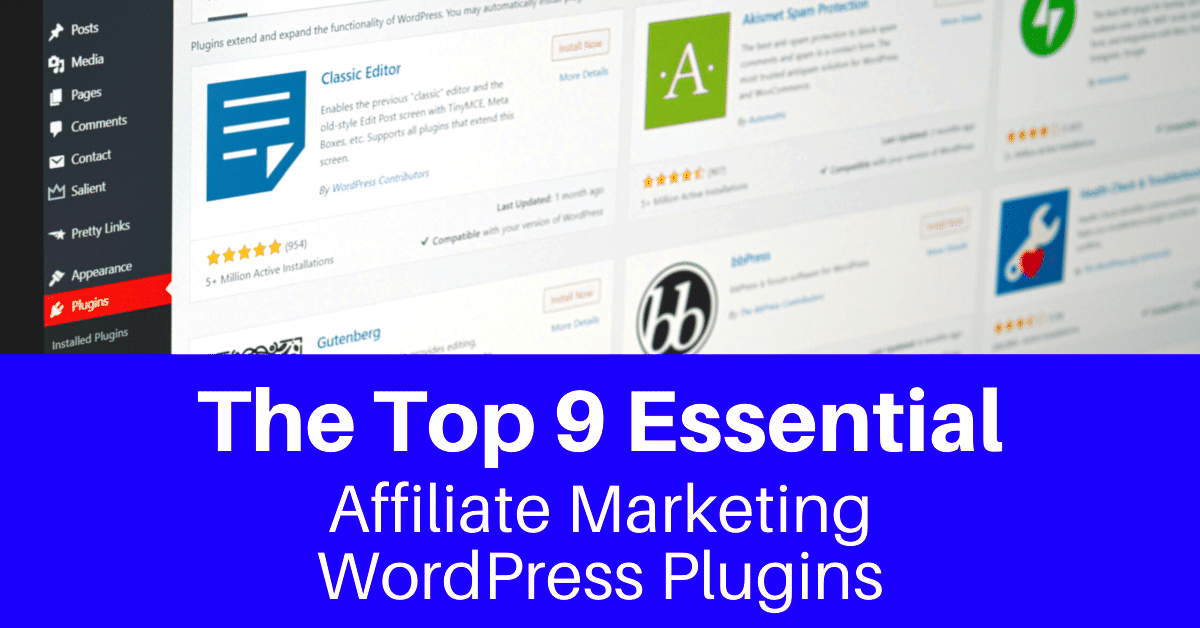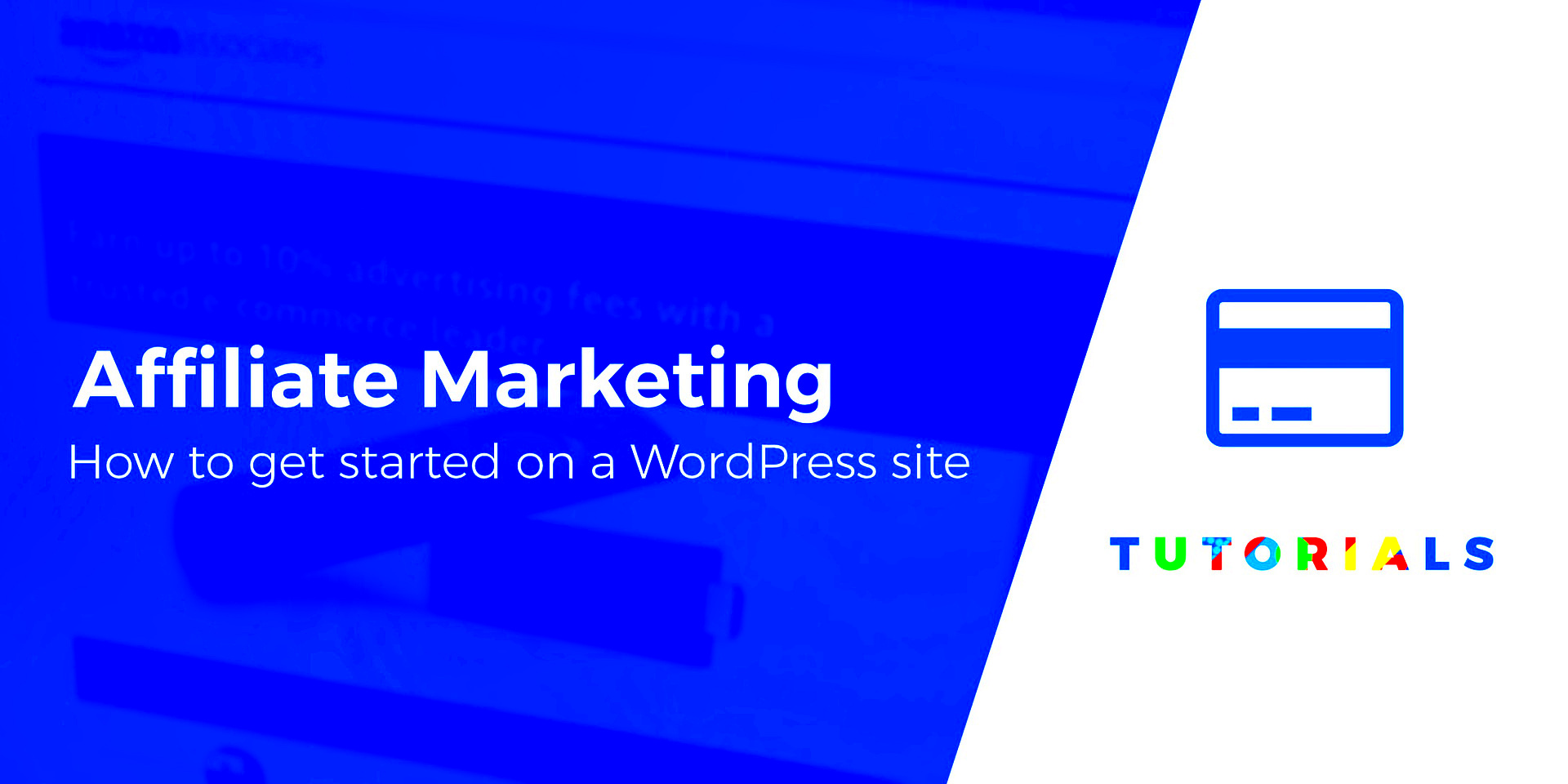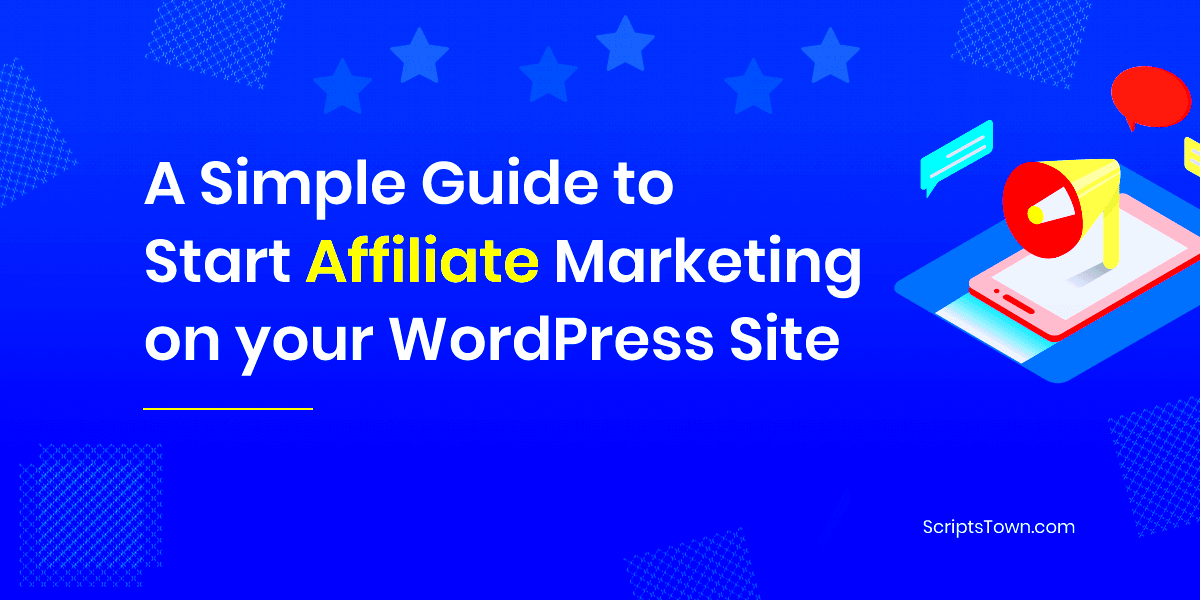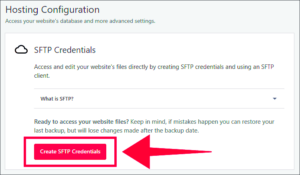Affiliate marketing is an exciting way to make money online, and WordPress is one of the best platforms to get started. In simple terms, affiliate marketing involves promoting other companies’ products and earning a commission for each sale or lead generated through your unique referral link. Whether you’re a blogger, a content creator, or simply passionate about a niche, WordPress allows you to create an appealing website that can attract visitors and convert them into customers.
The beauty of using WordPress for affiliate marketing lies in its flexibility and user-friendliness. You don’t need to be a coding wizard to set up a stunning website that showcases products, engages audiences, and drives traffic. Want to know how to maximize your affiliate marketing efforts? Let’s dive into some of the best practices to help you succeed!
Choosing the Right WordPress Theme for Affiliate Marketing

Selecting the right theme for your affiliate marketing site is crucial. A well-designed theme should not only look good but also enhance functionality and user experience. Here are some key features to consider when choosing your WordPress theme:
- Mobile Responsiveness: In an era where mobile devices dominate web traffic, ensure your theme is fully responsive, providing a seamless experience across various screen sizes.
- Speed Optimization: Choose a theme that is optimized for fast loading times. A slow website can deter visitors and hurt your rankings on search engines.
- Customizable Layout: Opt for themes that offer flexibility in layouts. You should be able to customize your pages easily to highlight your affiliate products.
- SEO-Friendly: Look for themes that are built with SEO best practices in mind. This will help your site rank better in search engine results and attract organic traffic.
- Support for Plugins: Ensure the theme is compatible with essential plugins that boost functionality, like affiliate link management and analytics tools.
Consider checking out popular themes specifically tailored for affiliate marketing, such as:
| Theme Name | Features | Price |
|---|---|---|
| ReHub | Multi-vendor support, comparison tables, and modern design | $59 |
| GeneratePress | Lightweight, SEO optimized, and customizable | Free/$49 (premium) |
| Astra | Fast, customizable, and customizable demo sites | Free/$47 (premium) |
Ultimately, your theme should align with your brand and the kind of products or services you plan to promote. Take your time, explore demos, and choose one that you feel will resonate with your audience!
Essential Plugins for Affiliate Marketing Success

When it comes to affiliate marketing on WordPress, plugins are your best friends. They help streamline your processes, optimize your content, and ultimately drive more conversions. Let’s explore some must-have plugins that can elevate your affiliate marketing game.
- ThirstyAffiliates: This plugin is perfect for managing your affiliate links. It allows you to cloak your links, making them more user-friendly and trustworthy. You can also track clicks, monitor performance, and categorize your links for easy access.
- Pretty Links: Similar to ThirstyAffiliates, this plugin helps in link shortening and management. Plus, it offers robust analytics to see which links are performing best, allowing you to refine your strategy.
- EasyAzon: If you’re focusing on Amazon affiliate marketing, this plugin is essential. It simplifies the process of adding Amazon affiliate links, images, and adds features like one-click product purchases directly from your site.
- Yoast SEO: Search Engine Optimization (SEO) is crucial for driving traffic to your affiliate links. Yoast helps you optimize your posts for SEO, provides readability analysis, and creates XML sitemaps to improve visibility.
- OptinMonster: Building an email list is a fantastic way to boost your affiliate marketing efforts. OptinMonster lets you create attention-grabbing opt-in forms to capture leads effectively.
- Social Snap: Social media can play a huge role in affiliate marketing. This plugin helps you optimize your content for sharing, ensuring your affiliate posts reach a larger audience.
Choosing the right plugins can significantly impact your success in affiliate marketing. Optimize your site, monitor performance, and ensure your content is easily accessible with these essential tools!
Creating High-Quality Content that Converts

Content is king, especially in the realm of affiliate marketing. Creating high-quality, informative, and engaging content is crucial to attract and retain visitors. But how do you craft content that not only informs but also converts? Let’s break it down.
Here are some key elements to focus on:
- Understand Your Audience: The first step is knowing who you’re talking to. Research your target audience’s needs, preferences, and pain points. Tailor your content to address these areas.
- Valuable Information: Your content should provide real value. Whether through detailed product reviews, how-to guides, or comparison articles, ensure that your information is useful, well-researched, and actionable.
- Engaging Headlines: Your headline is the first thing people see. Make it catchy and informative. A good headline can drastically improve your click-through rates.
- Clear Calls-to-Action (CTA): Don’t be shy about directing your audience. Use clear and compelling CTAs to guide them toward your affiliate links. Phrases like “Check out this product!” or “Get your discount here!” can make a big difference.
- Visuals Matter: Use images, infographics, or videos to make your content more engaging. Visuals can simplify complex information and keep readers interested and invested.
- SEO Optimization: Incorporate relevant keywords throughout your content to improve search engine visibility. This includes using keywords in headers, meta descriptions, and image alt text.
- Test and Analyze: Finally, measure your content’s performance. Use tools like Google Analytics to track user behavior, see which content is converting best, and refine your strategies accordingly.
Remember, the goal is not just to create content but to create content that resonates with your audience and drives them towards taking action. With these practices in hand, you’ll be well on your way to affiliate marketing success!
Optimizing Your Website for SEO
When it comes to affiliate marketing, Search Engine Optimization (SEO) plays a pivotal role in driving traffic to your website. If you’re not optimizing your site, you’re essentially leaving money on the table. It’s crucial to fine-tune various aspects of your site to make it search-engine friendly. Here are some practices that can lead to better SEO outcomes:
- Keyword Research: Start by identifying the keywords that are relevant to your niche. Tools like Google Keyword Planner or SEMrush can help you find keywords that potential customers are searching for.
- On-Page SEO: Use the identified keywords strategically within your content, headings, meta titles, and descriptions. By embedding keywords naturally, search engines can easily understand what your page is about.
- Quality Content: Content is king! Regularly publishing high-quality, informative, and engaging content not only attracts visitors but also keeps them coming back. Search engines favor websites with fresh content, so aim for consistency.
- Mobile Optimization: With an increasing number of users accessing websites via mobile devices, ensuring your site is mobile-friendly is essential. Google’s algorithms prioritize mobile-responsive sites in search results.
- Page Speed: A slow-loading website can lead to high bounce rates. Use tools like Google PageSpeed Insights to test and improve your site’s loading times.
Being mindful of these SEO best practices can drastically improve your website’s visibility. The more organic traffic you attract, the higher your chances of making affiliate sales!
Leveraging Social Media for Affiliate Marketing
Social media is an incredible tool for affiliate marketers looking to skyrocket their reach. With billions of active users, platforms like Facebook, Instagram, Twitter, and LinkedIn offer abundant opportunities to promote your affiliate products effectively. Here’s how you can leverage social media:
- Choose the Right Platform: Not all social media channels will suit every audience. Know where your target demographic spends their time and focus your efforts there. For instance, Instagram is highly visual, which works well for fashion or beauty products.
- Create Engaging Content: Avoid hard-selling. Instead, aim to provide value through informative posts, engaging videos, and compelling stories that resonate with your audience. Use attention-grabbing visuals to enhance your posts!
- Utilize Analytics: Track your social media performance using built-in analytics tools. This will help you understand what type of content performs best and allows you to adjust your strategy accordingly.
- Incorporate Call-to-Actions (CTAs): Don’t forget to include clear CTAs in your social posts. Encourage your followers to click your affiliate links or visit your website for more information.
- Engage with Your Audience: Building a community is key. Respond to comments, ask questions, and encourage discussions. An engaged audience is more likely to trust and act on your recommendations.
Incorporating social media into your affiliate marketing strategy not only expands your reach but also cultivates relationships with potential customers, making it a win-win resource!
7. Building an Email List for Affiliate Promotions
Building an email list is one of the most effective strategies for boosting your affiliate marketing success. After all, an engaged audience is an asset, and email marketing allows you to communicate directly with potential customers. But how do you get started? Let’s break it down.
First things first, you need to offer something compelling to encourage your visitors to subscribe. This could be:
- E-books or Guides: Share valuable resources that align with your niche.
- Exclusive Discounts: Offer special deals only available to subscribers.
- Newsletters: Provide regular updates packed with helpful information.
Once you’ve set up your incentive, implement a subscription form on your WordPress site. You can use plugins like OptinMonster or Mailchimp to create beautiful and effective forms. But remember, placement is key! Consider these locations:
- At the top of your homepage
- At the end of blog posts
- As a pop-up after a few seconds on the site
Lastly, engage with your email list regularly. Share updates about your latest blog posts, affiliate offerings, and provide valuable insights. Doing so not only strengthens your relationship with your audience but also increases the chances they’ll click on your affiliate links. So, start building that list – your wallet will thank you!
8. Tracking and Analyzing Your Affiliate Marketing Performance
To truly excel in affiliate marketing, you must keep a close eye on your performance. Tracking and analyzing your results can provide insights that help you refine your strategies and improve your returns. But how do you do that effectively?
First, you’ll want to use reliable tracking tools. Many affiliate programs offer built-in tracking features, but you can also use tools like Google Analytics to gain deeper insights into visitor behavior. Here are some key metrics to pay attention to:
| Metric | Description |
|---|---|
| Clicks | Number of times users clicked on your affiliate links. |
| Conversion Rate | Percentage of users who completed a desired action (like making a purchase) after clicking your link. |
| Earnings Per Click (EPC) | How much you earn per click on your affiliate links. |
Once you have this data, take a moment to analyze it. Ask yourself:
- Which links are performing the best?
- Where are visitors dropping off?
- What type of content drives the most clicks?
By addressing these questions, you can tweak your strategies, optimize your content, and ultimately maximize your affiliate marketing success. Remember, the goal isn’t just to drive traffic, but to generate conversions, and tracking performance is the key to understanding how to achieve that!
Compliance and Ethical Considerations in Affiliate Marketing
When it comes to affiliate marketing, adhering to compliance and ethical guidelines isn’t just a best practice—it’s a necessity. The digital landscape is filled with regulations and standards that aim to protect consumers. Familiarizing yourself with these rules will not only enhance your credibility but also shield you from potential legal issues.
First and foremost, it’s crucial to be transparent with your audience. This means clearly disclosing your affiliate relationships. The Federal Trade Commission (FTC) mandates that you inform your audience when you’re earning commissions on sales. A simple statement like, “This post contains affiliate links. If you make a purchase through these links, I may earn a small commission at no extra cost to you,” goes a long way in establishing trust.
Here are some key compliance guidelines to keep in mind:
- Disclosures: Always disclose your affiliate relationships in a clear and conspicuous manner.
- Privacy Policies: If you collect personal information on your site, make sure to have a privacy policy that outlines how you use this data.
- Advertising Standards: Ensure that your promotional content is honest and does not make misleading claims about products or services.
- Quality of Products: Promote products you believe in and that deliver value to your audience. Poor choices can damage your reputation.
Ethical considerations should also guide your decision-making process. Focusing on your audience’s needs and preferences will make your marketing more effective and foster a loyal following. Remember, your integrity is your currency in affiliate marketing!
Conclusion: Take Action and Start Earning
Now that you’ve delved into the various aspects of leveraging WordPress for affiliate marketing, it’s time to take the plunge. The online world is ripe with opportunities, and the tools and strategies you’ve learned can set you on a path to success.
But remember, affiliate marketing isn’t a “get rich quick” scheme. It requires effort, consistency, and strategy. Here’s a quick checklist to help you get started:
- Choose your niche: Identify a topic you’re passionate about and knowledgeable in.
- Sign up for affiliate programs: Select programs that align with your niche and audience.
- Create quality content: Produce valuable, engaging content that attracts visitors.
- Implement SEO best practices: Optimize your website to improve visibility and traffic.
- Monitor your performance: Use analytics to track your progress and refine your strategies.
Also, don’t forget to stay compliant and ethically responsible. Building a genuine connection with your audience will pay off in the long run. So gear up and start today! Your journey into affiliate marketing awaits, and trust me, it’s going to be an exciting ride!



